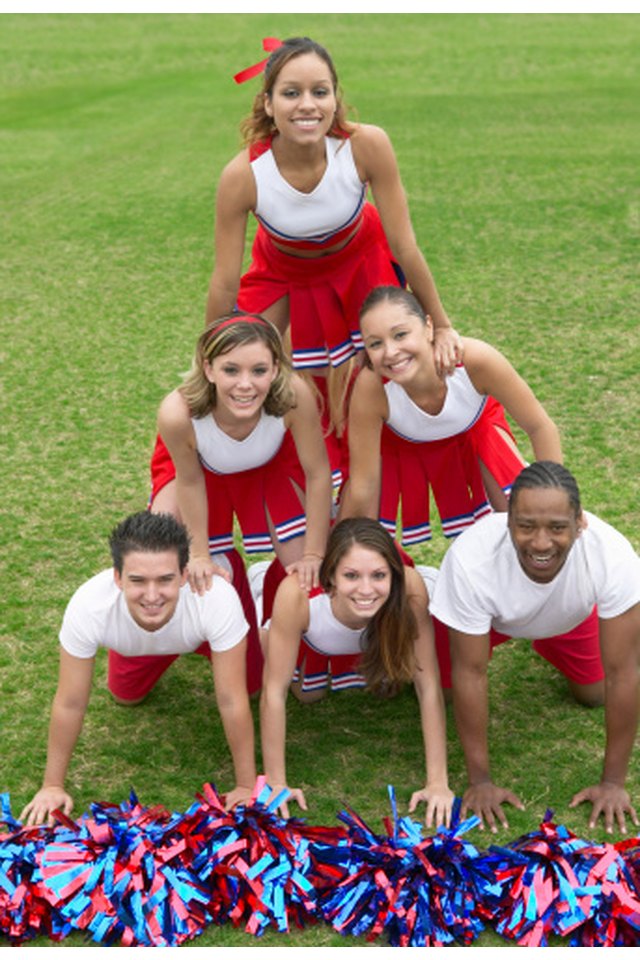Cheerleading Pyramids for Beginners

The days of cheerleaders standing on the sidelines and simply cheering for their teams are over. Cheerleading has emerged into a sport of its own with flipping, pyramids and high-flying stunts. For all the flash though, it is important for beginners to learn strong foundations by practicing easy and safe pyramids.
Cheerleader Roles
There are three important roles when it comes to building pyramids in cheerleading. A base is the bottom of a pyramid and supports the weight of another person. The mounter -- or flyer -- is the person who stands on top of a bases' hands or shoulders. You will find that mounters are generally short, lightweight and have excellent balance. The final position is the spotter. The spotter is there to help catch the mounter in the event she loses her balance or begins to fall. Almost all cheerleading pyramids require spotters.
Thigh Stand
A thigh stand requires two bases, a spotter and a mounter. The bases should each position themselves in a side-lunge position. One should lunge with the left leg and the other should lunge with the right leg. The feet on the lunged leg of each base should be touching each other. The mounter positions her hands on the shoulders of the bases. One leg should be placed in the thigh of a base -- the base can hold onto the mounter's foot for support. The mounter should then push off the ground and position her other foot on the remaining base's thigh. The spotter can hold on to the waist of the mounter in order to help her on to the bases' thighs. The mounter should then straighten up and lock her legs. The spotter should keep a constant eye on the mounter.
Shoulder Sit
A shoulder sit requires one base, a spotter and a mounter. The base should assume a side-lunge position -- which side is up the mounter and the base. The mounter should stand behind the base. The mounter should place her foot on the thigh of the base. She should then stand up straight and swing her leg over the other shoulder of the base. Once the leg is secure, swing the leg up off the base's thigh onto her other shoulder. Legs should be tucked behind the back of the base, and the back of the mounter should always remain straight. A spotter can be used to hold onto the waist of the mounter as she positions herself on the base.
Double Base Elevator
A double base elevator is a fairly simple cheerleading pyramid. This pyramid requires two bases, a mounter and a spotter. Bases stand facing each other. Bases should bend their knees and hold their hands out in front of them palm side up. The mounter uses the bases' shoulders for stability and support as she jumps into the hands of the bases. The bases will then bring their hands up to chin level -- bases should be very close in height. The mounter will straighten her legs and stand straight up. The spotter will grab the ankles of the mounter for support.
Cautions
Flashy cheerleading moves do not come without consequences. According to the U.S. Sports Academy, college cheerleading accounts for 70.5 percent of all catastrophic sports injuries and 65.2 percent of catastrophic high school sports injuries. Cheerleading is the most dangerous female sport. Become proficient in cheerleading basics before you fly too high.
References
Writer Bio
Michelle Zehr started writing professionally in 2009. She has written on health, fitness, fashion, interior design, home decorating,sports and finance for several websites. Zehr possesses a Bachelor of Arts in communication from the University of Pittsburgh, a Master of Arts in professional writing from Chatham University and a graduate certificate in health promotion from California University of Pennsylvania.
